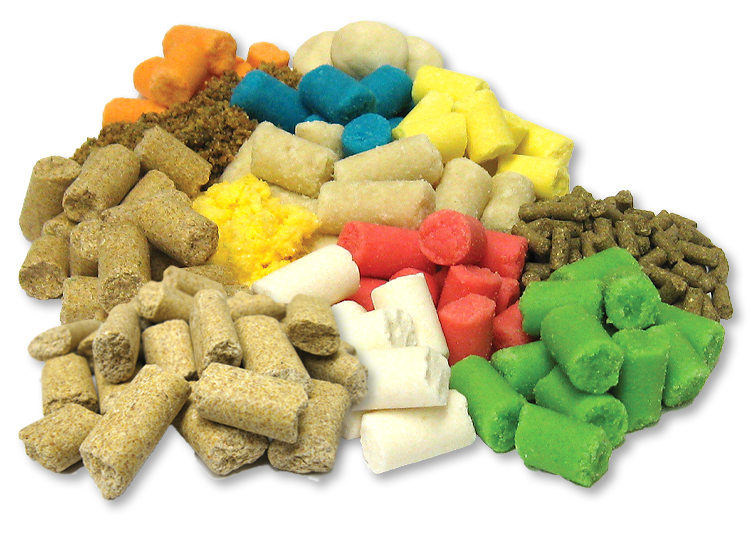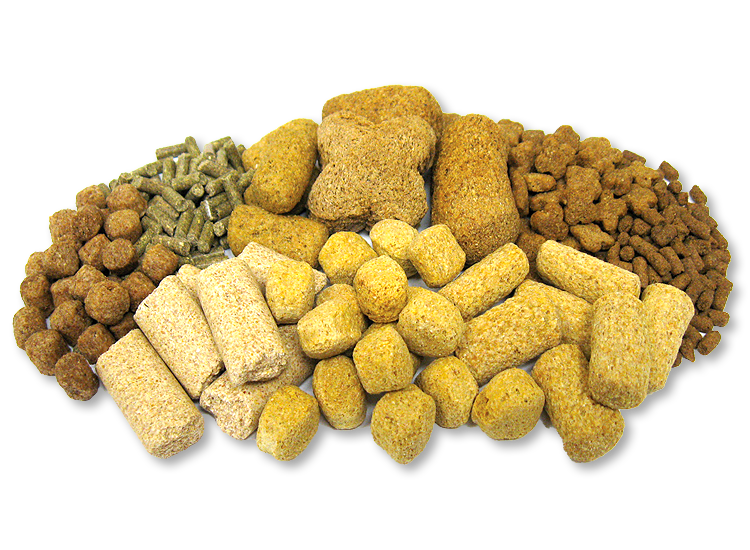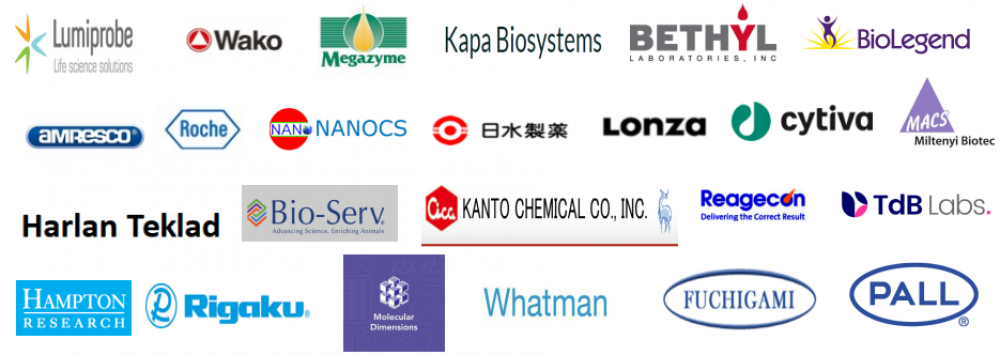Harlan 定制饮食诱发肥胖Custom diet induced obesity
Harlan Teklad动物饲料
欢迎新老客户访问Harlan官网或者咨询上海金畔生物获取更多详细资料。
Diet induced obesity

Purified high fat diets used to induce obesity and obesity-related complications such as diabetes and metabolic syndrome typically have 40-60% of energy derived from fat. The diet tables below summarize relevant diet features for several Teklad custom research diets commonly used in rodent models.
Teklad also creates high-fat diets for other species, including pigs, primates, and dogs. Contact us to discuss the use of these diets or one that better meets your needs.
用于诱发肥胖和肥胖相关并发症(如糖尿病和代谢综合征)的纯化高脂肪饮食通常有 40-60% 的能量来自脂肪。 下面的饮食表总结了啮齿动物模型中常用的几种 Teklad 定制研究饮食的相关饮食特征。
Teklad 还为其他物种创造高脂肪饮食,包括猪、灵长类动物和狗。 联系我们讨论如何使用这些饮食或一种更能满足您需求的饮食。
order today
18301939375
上海金畔生物科技有限公司
Commonly-used diet-induced obesity (DIO) Teklad rodent diets with 55-60% of calories from fat
| Diet features | TD.06414 stocked | TD.93075 dough | TD.07011 pellet |
|---|---|---|---|
| Kcal/g | 5.1 | 4.8 | 4.8 |
| Fat, % Kcal | 60 | 55 | 55 |
| Fat Sources,% by weight | 31% lard 3% soybean oil |
27.4% vegetable shortening 1.6% corn oil |
27.4% vegetable shortening 1.6% corn oil |
| Calculated fatty acid profile, % total fat | 36% saturated 41% monounsaturated 23% polyunsaturated |
24% saturated 61% monounsaturated (cis + trans) 15% polyunsaturated (cis + trans) |
24% saturated 61% monounsaturated (cis + trans) 15% polyunsaturated (cis + trans) |
| Sucrose, % by weight | 12.1 | 9.6 | 9.6 |
| Notes | 60F10S poster data Compare to D12492 |
Trans fat | Trans fat |
| Example modifications | TD.08500 coconut oil TD.09766 milk fat |
||
| Ingredient matched, low fat control diets* | TD.06416 (35% sucrose) TD.08806 (11% sucrose) |
TD.93074 (21% sucrose) TD.120651 (7% sucrose) |
TD.93074 (21% sucrose) TD.120651 (7% sucrose) |
| References | Mouse Rat |
Mouse Rat |
Mouse Rat |
*Control diets can be designed in several ways, depending on what features the researcher wants to modify relative to the high-fat diet. These are just a few examples.
对照饮食可以通过多种方式设计,具体取决于研究人员相对于高脂肪饮食想要修改的特征。 这些只是几个例子。
Commonly-used diet-induced obesity (DIO) Teklad rodent diets with 40-45% of calories from fat
常用的饮食诱导肥胖 (DIO) Teklad 啮齿动物饮食,其中 40-45% 的卡路里来自脂肪
| Diet features | TD.06415 | TD.08811 | TD.88137 stocked | TD.95217 |
|---|---|---|---|---|
| Kcal/g | 4.6 | 4.7 | 4.5 | 4.3 |
| Fat, % Kcal | 45 | 45 | 42 | 40 |
| Fat sources, % by weight | 19.5% lard 3% soybean oil |
21% milk fat 2% soybean oil |
21% milk fat | 10.6% vegetable shortening 4% milk fat 4% soybean oil |
| Fatty acid profile,% total fat | 35% saturated 40% monounsaturated 25% polyunsaturated |
61% saturated 30% monounsaturated 9% polyunsaturated |
66% saturated 30% monounsaturated 4% polyunsaturated |
31% saturated 47% monounsaturated (cis + trans) 22% polyunsaturated (cis + trans) |
| Sucrose,% by weight | 22.8 | 36.8 | 34.5 | 15.8 |
| Notes | Compare to D12451 | 45F30S poster data | “Western Diet”Cholesterol added | Trans fat |
| Example modifications | TD.110716 milk fat TD.10670 no dye |
TD.130784 lard TD.120438 no dye |
TD.07201 lard TD.00573 h-coconut oil, no cholesterol TD.09682 blue dye |
TD.07734 green dye |
| Ingredient matched, low fat control diets* | TD.06416 (35% sucrose) TD.110675 (18% sucrose) |
TD.120455 (6% sucrose, resistant starch) TD.120724 (14% sucrose) |
TD.05230 (34% sucrose) TD.08485 (12% sucrose) |
TD.06101 (6% sucrose) |
| References | Mouse Rat |
Mouse Rat |
Mouse Rat |
Mouse Rat |
Diets for diet-induced obesity (DIO)
Diets with 55-60% of calories from fat like TD.06414 and TD.93075 are commonly used for inducing obesity in rodents. While considered extreme compared to typical human fat consumption, these diets are effective in initiating rapid weight gain in most rodents. With higher fat content there is less room for carbohydrate, thus the carbohydrate (particularly sucrose) amount is relatively low compared to other obesity inducing diets. If you are interested in high fat and high carbohydrate, look at diets with 40-45% of calories from fat (often referred to as western diets).
As the fat level increases, pellet quality (durability) is often compromised. Some higher fat formulas are available only in non-pelleted form or require specific carbohydrate, maltodextrin, for pelleting. Depending on the fat and carbohydrate sources used, the non-pelleted form could be dense and crumbly, dough-like, or paste-like. Though a little more challenging to work with, non-pelleted diet is still used by many researchers for diet-induced obesity models as these researchers suspect the softer form may enhance obesity development.
Diets with 40-45% of calories from fat, like TD.95217 , TD.88137 , TD.06415 , and TD.08811 , represent another popular diet pattern for diet-induced obesity work. These diets have double or triple the amount of sucrose found in higher fat diets. High levels of simple carbohydrate like sucrose and fructose may help to promote hypertriglyceridemia, insulin resistance, and fatty liver. Diets with a pattern of high sucrose and high saturated or trans fat are often referred to as “Western Diets” in obesity and cardiovascular fields. Some “Western Diets” have further modifications to the fatty acid profile or even specific vitamin and minerals adjustments to be even more closely matched to a Western Diet pattern. For specific fatty acid modifications, see examples on our fat/lipid adjusted diets page.
Diets for diet-induced diabetes
Many of the same diets used for inducing obesity in rodents can be used to enhance diabetes related phenotypes like insulin resistance and glucose intolerance. However, fasting hyperglycemia characteristic of diabetes (glucose > 200 mg/dL) is uncommon with a diet only approach. Pre-feeding a high fat diet to induce a certain level of obesity and insulin resistance and then giving low-dose streptozotocin (STZ) may be an effective approach if overt hyperglycemia is desired.
Ingredient matched, low-fat DIO control diets
There are many options with different levels and types of fat in addition to different types of carbohydrate ranging from sucrose (highly refined, simple digestion) to corn starch (refined, but more complex) to resistant starch (refined, but not fully digestible). A very basic purified control diet would be AIN-93M (TD.94048 ) or AIN-93G (TD.94045 ). AIN-93 diets have a moderate amount of sucrose at ~10%, and fat is from soybean oil with a healthy fatty acid profile. Additional examples of controls for specific DIO diets can be found in the above tables. Learn more about AIN diet formulas.
Many researchers choose to compare their high fat fed animals to animals fed a natural ingredient, grain-based diet (also referred to as standard diets or chow). These diets differ in the source and level of nutrients as well as in the presence of non-nutritive factors (such as phytates or phytoestrogens). Depending on what your main comparisons are, it may be suitable to have a grain-based diet as your control/reference group. However, making such comparisons limits inferences to dietary patterns versus a specific dietary component.
饮食引起的肥胖症 (DIO)
TD.06414 和 TD.93075 等 55-60% 热量来自脂肪的饮食通常用于诱导啮齿动物肥胖。虽然与典型的人类脂肪消耗相比,这些饮食被认为是极端的,但这些饮食在大多数啮齿动物开始快速体重增加方面是有效的。由于脂肪含量较高,碳水化合物的空间较小,因此与其他导致肥胖的饮食相比,碳水化合物(尤其是蔗糖)的量相对较低。如果您对高脂肪和高碳水化合物感兴趣,请查看 40-45% 卡路里来自脂肪的饮食(通常称为西方饮食)。
随着脂肪含量的增加,颗粒质量(耐用性)通常会受到影响。一些高脂肪配方仅以非颗粒形式提供,或者需要特定的碳水化合物麦芽糖糊精来制成颗粒。根据所使用的脂肪和碳水化合物来源,非颗粒状可以是致密易碎的、面团状或糊状的。尽管使用起来更具挑战性,但许多研究人员仍将非颗粒状饮食用于饮食诱导的肥胖模型,因为这些研究人员怀疑较软的形式可能会促进肥胖的发展。
40-45% 热量来自脂肪的饮食,如 TD.95217、TD.88137、TD.06415 和 TD.08811,代表了另一种流行的饮食诱导肥胖工作的饮食模式。这些饮食中的蔗糖含量是高脂肪饮食中的两倍或三倍。高水平的简单碳水化合物如蔗糖和果糖可能有助于促进高甘油三酯血症、胰岛素抵抗和脂肪肝。具有高蔗糖和高饱和或反式脂肪模式的饮食在肥胖和心血管领域通常被称为“西方饮食”。一些“西方饮食”对脂肪酸成分进行了进一步的修改,甚至对特定的维生素和矿物质进行了调整,以更加接近西方饮食模式。对于特定的脂肪酸修饰,请参阅我们的脂肪/脂质调整饮食页面上的示例。
饮食诱发糖尿病的饮食
许多用于诱导啮齿动物肥胖的相同饮食可用于增强糖尿病相关表型,如胰岛素抵抗和葡萄糖耐受不良。然而,仅通过饮食的方法很少出现糖尿病的空腹高血糖特征(葡萄糖 > 200 mg/dL)。如果需要明显的高血糖,预先喂食高脂肪饮食以诱导一定程度的肥胖和胰岛素抵抗,然后给予低剂量的链脲佐菌素 (STZ) 可能是一种有效的方法。
成分匹配的低脂 DIO 控制饮食
除了不同类型的碳水化合物,从蔗糖(高度精制,简单消化)到玉米淀粉(精制,但更复杂)到抗性淀粉(精制,但不完全消化),还有许多脂肪含量和类型不同的选择。一个非常基本的纯化对照饮食是 AIN-93M (TD.94048) 或 AIN-93G (TD.94045)。 AIN-93 日粮含有适量的蔗糖,约为 10%,脂肪来自具有健康脂肪酸成分的大豆油。特定 DIO 饮食控制的其他示例可在上表中找到。了解更多关于 AIN 饮食配方的信息。
许多研究人员选择将他们喂食高脂肪的动物与喂食天然成分、谷物饮食(也称为标准饮食或食物)的动物进行比较。这些饮食的营养来源和水平以及非营养因素(如植酸盐或植物雌激素)的存在不同。根据您的主要比较,以谷物为主的饮食作为您的对照组/参考组可能是合适的。然而,进行这样的比较限制了对饮食模式与特定饮食成分的推断。
Live chatLive chat

图片仅供参考,请以实物为准。
若本网站没有及时更新,请大家谅解!
正文中列出的所有试剂只能用于测试或研究,不能作为”药品”,”食品”,”家庭用品”等使用。
我司所销售的化学试剂、原料等所有产品(包括但不限于抗生素类、蛋白质类、试剂盒类产品等)仅限用于科学研究用途,不得作用于人体。
